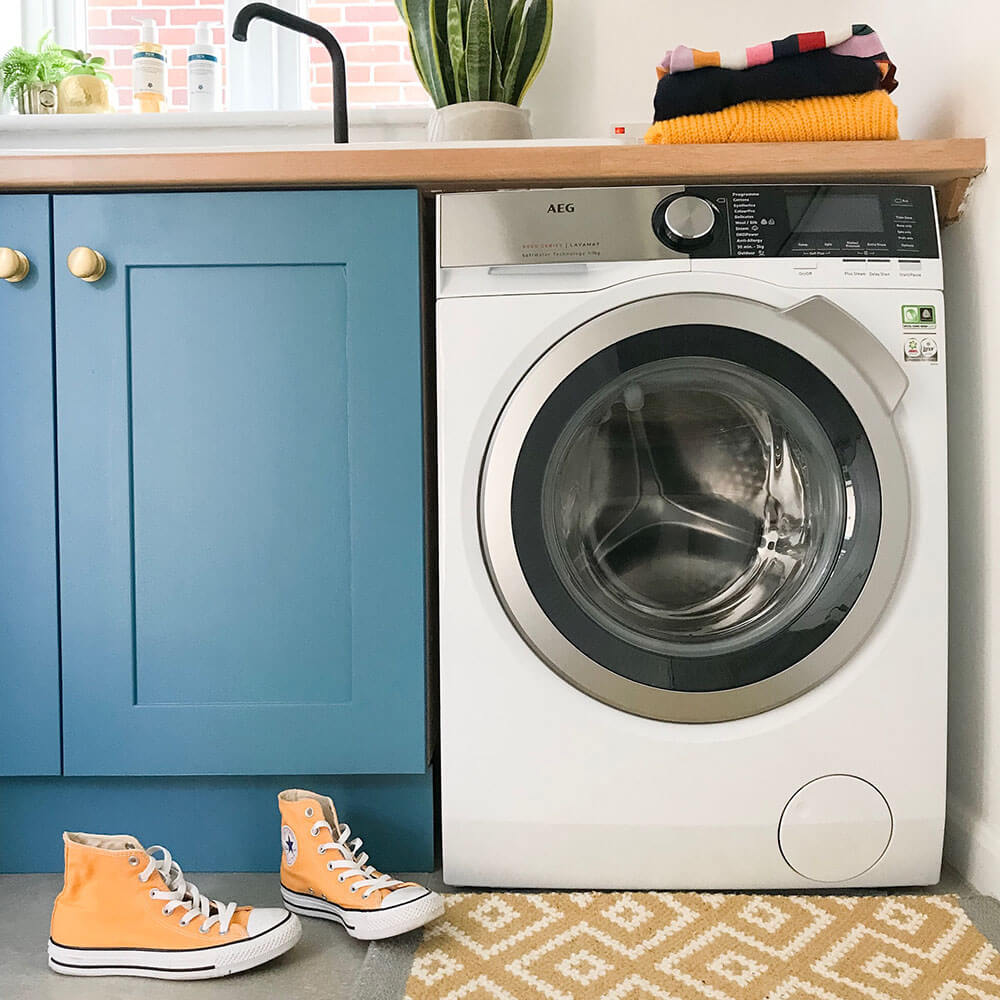Our site uses cookies to give you the best experience. or continue shopping if you're happy.
Accept & closeHow To Plan Your Kitchen Plumbing & Wiring
It’s the less glamorous part of a kitchen project, but don’t forget to think about the wiring and plumbing – even if you’re not doing it yourself.
Your new dream kitchen is an exciting project. Don’t let plumbing problems or wiring wrangles throw it off course and spoil the fun. We help you avoid the pitfalls by showing you what to plan for in the weeks ahead.
Your fridge may need plumbing
If you’ve fallen head over heels for an American style fridge-freezer with ice box, chilled water dispenser etc, you can bet your bottom dollar it needs to be plumbed in. If this is the case then it will need to be within 1.5 metres of a water source. Getting your fridge plumbed in will add to your costs too, so don’t forget to add this in to your budget. If you can’t plumb your fridge in, you don’t have to give up on the water dispenser entirely. You can still have one that you manually fill.

Put dishwashers near a mains water feed
When you’re thinking about where to install your dishwasher, it’s fairly straightforward, you just need to be near a cold water supply. Check the manual you get with your machine, it will tell you what water pressure it needs. A water tank 10 metres above the outlet will have 100kPa (kilopascals) or about 1 bar. In older properties it can be less than this, but during the day, water pressure tends to be around 3 bars and then drop at times of peak usage. Most machines are designed to use mains water directly connected, so you should only run into problems if you intend to use a tank supply with a small vertical distance to the water tank. Your dishwasher will come with a flexible hose or hoses with screw connections at each end to easily connect it to the water supply. You’ll also need drainage for the waste water.

Make sure you've got water outlets
Make sure you’ve got sufficient waste outlets in your under sink plumbing to connect all your ‘wet appliances’ to. Otherwise you may have to consider another option to deal with waste from washing machines and dishwashers. You can either place the waste hose from the machine into the sink when you’re using it or permanently connect the waste hose from the machine to a dedicated waste outlet.

Some tumble dryers can be connected to a mains drain
You may be able to connect your tumble dryer, condenser dryer or heat pump to a main water drain. You’ll need a condensation drain hose and you’ll find a connector hose on the back of your dryer, often on the right-hand side, depending on your brand of dryer.

Keep your fridge cool
This may seem obvious, but you need to have your fridge away from anything hot in the kitchen. So that’s the oven and microwave of course, but keep it away from radiators too. And try to make sure it’s not in direct sunlight, as this can heat it up.

Beware the hot zone
Hot zones are clearance areas around appliances that need to be kept free from flammable materials. Typically these are areas above, behind and to the side of hobs, range cookers, built in ovens and high level grills. That means your cooker point needs to be well away from this area for safety. Installing your gas cooker is a no go if you can’t achieve this.

Where to wire your hood
Depending on the kilo-wattage of your cooker or hood, you may need a dedicated 32/40 amp circuit to plug into. These appliances often need too much power to be connected to the kitchen socket circuit. It will of course, need to be outside the hot zone of 75cm too. If this is the case, it will need an isolation switch, which needs to be in an easily accessible place, either above or below your worktops or in a cupboard.
Island cooker hoods look great – often like designer features in their own right. But you just need to be careful about where you put the wiring. Check with your electrician.

Check you have enough sockets
The kitchen is the busiest room in the house, providing coffee to wake everyone up in the morning, endless laundry, dinner extravaganzas and cold glasses of wine at the end of the day. So make sure you’ve got enough sockets to power everything that’s happening. They need to be accessible too. You need plenty of sockets above the worktops to plug in things like your kettle, toaster and microwave. Then lots in cupboards or on an island next to the appropriate appliance for your fixed and free-standing fridge/freezer, washing machine, dishwasher and oven, so you can easily plug them in.

Image credits: @carlaelliman, @firstsenseinteriors, @carol_at_rose_field_cottage, @littleterracehouse, @stayinginstudio, @the_middle_terrace, @oxfordone, @acorn_cottage

